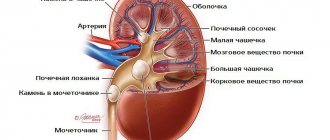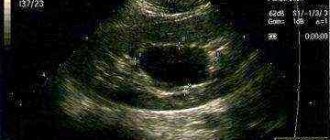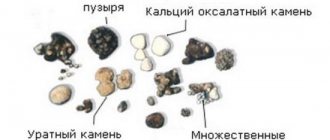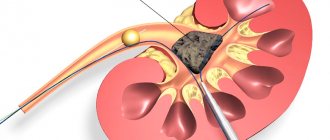Nephritis in animals is an inflammatory process in the kidneys of a diffuse nature, accompanied not only by impaired urinary function, but also by intoxication of the entire body. Inflammation affects the organ parenchyma, blood vessels and renal pelvis. The etiology of the disease depends on many factors and is primarily due to the presence of infection. Therapeutic measures are carried out taking into account the form of the disease.
Reasons for the development of nephritis
Veterinary practice shows that the most common causes of kidney inflammation in dogs are the following:
- Past infectious diseases . Pathogenic microorganisms that cause infections such as leptospirosis, canine distemper, viral hepatitis and enteritis, as a rule, lead to the development of nephritis. Pathogenic bacteria and viruses enter the kidneys through the bloodstream or lymphogenous route. In this case, the disease is considered as a complication after an infection.
- Hypothermia. A long walk in bad weather, walking decorative dog breeds in unfavorable weather conditions without protective clothing, bathing a pet in open bodies of cold water, keeping a pet in damp, unheated rooms are the main causes of the development of inflammatory processes in the kidneys. A weakened immune system makes the situation worse.
- Helminthiases. Helminthic infestations lead to intoxication of the body with waste products of parasites, which is accompanied by dysfunction of the excretory system and the development of inflammation in the kidneys.
- Intoxication . Poisoning of four-legged friends with poisonous plants, toxic fumes, household pesticides, pesticides, and solvents is a common cause of the development of renal pathology. Toxic substances are mainly excreted through the kidneys, damaging their cellular structure and disrupting the normal processes of formation and excretion of urine.
- Insect bites . Biological poisons and toxins from bites of midges, bees, and ticks have a pronounced nephrotoxic effect. By affecting the kidneys at the cellular level, toxins lead to the development of diffuse inflammation.
- Injuries . As a result of mechanical damage or compression of organs, an inflammatory reaction occurs in the renal tissues.
- Use of medications. Arsenic-containing medications, creolin and other medications can harm the body's excretory function.
Veterinarians also note cases of nephritis in dogs that have been eating spoiled food for a long time. The risk group includes stray animals and dogs of decorative breeds with poorly developed undercoat.
We recommend reading about how to boost your dog’s immunity. You will learn about the causes of low immunity in dogs, signs of this condition, recommendations, vitamins and folk remedies to improve the condition of your pet. Find out more about treating colds in dogs here.
The renal pelvis is dilated in the fetus: possible causes and health consequences
An ultrasound examination, which every pregnant woman should undergo, is not only a way to “get to know” her baby, but also a method for diagnosing most intrauterine pathologies and congenital anomalies. According to statistics, one of the common problems at this stage of development is pyeloectasia - expansion of the renal pelvis. It is detected in approximately 2% of all pregnancies. What may be associated with renal pyeloectasia in the fetus, is this condition dangerous, and does it require treatment: let’s try to figure it out.
Symptoms of pathology in dogs
The action of one or another negative factor leads to spasm of blood vessels in the kidneys and the development of ischemia. Increased production of the hormone renin leads to a narrowing of the lumen of blood vessels, impairing their permeability.
The pathological process as a whole leads to general hypertension, azotemic uremia, chronic renal failure. Products of protein metabolism - urea, creatinine - accumulate in the body, which is accompanied by intoxication. All this is manifested by the following symptoms:
- Increase in body temperature by 1 - 1.5 degrees. The dog has a hot and dry nose and increased thirst.
- The general condition is depressed. A sick animal is lethargic, apathetic, avoids active physical activity, and is reluctant to go for a walk.
- Appetite is reduced or completely absent.
- Change in posture - the dog arches its back unnaturally and takes a forced position.
- Pain syndrome. When palpated in the lumbar region, the dog shows anxiety and even aggression. Often a sick animal tries to bite the owner when stroking the back.
- Violation of the act of urination. The chronic form of the disease is often accompanied by polyuria. In acute nephritis, on the contrary, urine production decreases, anuria or oliguria is observed. When urinating due to pain, the dog takes unnatural positions, whines, and worries. The inflammatory process is accompanied by frequent urination. The urine is cloudy.
In severe cases, brown urine is observed due to the presence of blood in it due to damage to blood vessels and the release of red blood cells. The content of pus in the urine is due to the action of pathogenic microflora in the kidney tissues.
- The color of visible mucous membranes changes from a healthy pink to pale or bluish.
- Swelling in the abdomen, thighs, submandibular and groin areas is caused by the retention of salt and water in the tissues due to increased production of antidiuretic hormone.
- General intoxication of the body is accompanied by vomiting, an unpleasant uremic odor from the pet, constriction of the pupils, convulsions, and in severe cases, paralysis. Dyspepsia is one of the manifestations of intoxication of the body with protein breakdown products.
High levels of nitrogenous substances negatively affect the body's respiratory system, causing inflammation. In this regard, dogs with nephritis often show symptoms of bronchitis and bronchopneumonia.
Aplasia
Kidney aplasia is a congenital anomaly in which the organ is an underdeveloped rudiment lacking normal renal structure.
With unilateral aplasia, the function of the atrophied organ is taken over by the second kidney. Due to long-term compensatory work, it hypertrophies (increases in size). The disease does not manifest itself symptomatically. It can be discovered randomly during an ultrasound of the abdominal organs.
Bilateral aplasia is an anomaly that is not compatible with life. The kitten dies in utero or in the first two to three days after birth due to renal failure.
Classification
In veterinary medicine, it is customary to divide nephritis in animals according to the nature of the process into acute, subacute, chronic and subchronic. The chronic form of the disease is a complication of acute nephritis. In the chronic course of the disease, hyperthermia is galloping in nature, and the symptoms of intoxication are weakly expressed. The acute form of the disease is accompanied by a feverish state, pronounced intoxication, and the rapid development of uremia.
Based on the form of the pathological process, veterinary specialists distinguish between diffuse and focal nephritis. In the first case, the inflammatory process affects all kidney tissues - the pelvis, parenchymal tissues and the vascular network of the glomeruli.
In the case of focal pathology, inflammation is localized in individual glomeruli. This form of the disease passes without hypertensive phenomena and edema. The blood flow in focal nephritis is not disturbed, and the symptoms of intoxication in the animal are not observed in this regard.
Special cases of the disease
The consequences of kidney disease during pregnancy should be considered, since this topic is especially exciting for expectant mothers. Moreover, they cause discomfort, which creates an additional reason for stress for a woman. There are two types of occurrence of this disease:
| Before pregnancy | During pregnancy |
| In this case, doctors order a full examination and leave the woman under constant medical supervision, since the stage of the disease could have moved forward long ago, and the consequences could be irreversible for both the pregnant woman and the unborn baby. In extreme cases, a decision may be made to terminate the pregnancy. | Here, special importance is attached to the presence of infections in the body, which can be treated. The pregnant woman is prescribed complete rest and the necessary medications are prescribed, which indicates the possibility of conservative treatment. The main thing is to prevent the disease from becoming acute, otherwise the outcome will not be happy at all. |
During such a period, the expectant mother simply needs the care of loved ones. Especially considering the fact that physiological and mental health are closely interconnected. Timely visit to the hospital can prevent the worst consequences, so never delay going to the doctor. Firstly, his consultation will help you monitor your health, and secondly, you will protect not only yourself, but also your loved ones, in particular, children.
Diagnostic methods
Having discovered symptoms of nephritis in a four-legged friend, the owner should immediately contact a specialized institution. A veterinarian, in addition to a general examination of the animal, palpation of the kidney area, tonometry, will prescribe a clinical blood and urine test.
Red and white blood cells, renal epithelium and salts are found in urine. Proteinuria and hematuria are characteristic conditions for kidney inflammation. A clinical blood test usually shows an increased level of protein, leukocytes and creatinine.
An effective tool in making a diagnosis is ultrasound examination. The method allows you to identify the localization of inflammation, estimate the size of the diseased organ, and detect destructive changes in the parenchyma.
Ultrasound
Contrast x-rays and a kidney biopsy can help make the diagnosis. The disease should be differentiated from nephrosis, pyelonephritis, urolithiasis, and inflammation of the bladder.
Norms for ultrasound of fetal kidneys
Normally, a longitudinal ultrasound scan reveals the fetal kidneys as a bean-shaped or oval formation located in the lumbar region. On a transverse scan they have a round shape and are identified as paired formations on both sides of the spine.
One of the structural units of the kidney is the calyces, which, merging with each other, form one common cavity - the renal pelvis. Gradually narrowing, the pelvis continues into the ureter. The ureter drains into the bladder.
Using an ultrasound machine, the doctor can visualize the pyelocaliceal system starting from the 14th week of intrauterine development. Normally, the diameter of the renal pelvis should not exceed:
- in the second trimester – 4-5 mm;
- in the third trimester – 7 mm.
Examination of the internal structure of the organ becomes possible after 20–24 weeks of pregnancy. During this period, it is already possible to diagnose some developmental anomalies:
- agenesis (absence of one or both kidneys);
- atypical location of the organ (dystopia);
- increase in size;
- expansion of the calyces and (or) renal pelvis;
- cystic changes in the kidneys.
The fetal ureters are not normally visualized.
Treatment of acute and chronic forms
Therapy for infectious kidney inflammation necessarily includes the use of antibacterial drugs. The best option would be to prescribe antibiotics after a microflora sensitivity test. In veterinary practice, in the treatment of acute forms of nephritis, penicillin antibiotics, cephalosporins, and tetracyclines are used.
Among penicillins, Ampicillin, Amoxicillin, Ampiox have a good effect against renal infection. Of the cephalosporins, veterinarians use Cephalosporin, Cephalexin, Cobactam, Cefazolin for acute nephritis.
The drugs are active against streptococci and staphylococci, the most common causes of nephritis in dogs. Tetracycline drugs, such as Doxycycline, have a bactericidal effect on most pathogenic microorganisms that cause inflammation in the kidneys.
Antibiotics for the treatment of nephritis in dogs
Sulfonamides and nitrofurans have a good therapeutic effect for nephritis in dogs: Sulfalene, Sulfadimethoxine, Norsulfazole, Furadonin. If the level of urea in the blood is more than 25 mmol/l, treatment is carried out only with nitrofurans that have a small molecular weight: Furazolidone, Furagin. The course of treatment with antibacterial drugs is at least 10 - 14 days.
In the acute form, it is important to immediately detoxify the body. For this purpose, the animal is prescribed intravenous infusions of glucose solution, calcium chloride, saline solution, and rheopolyglucin.
Treatment of acute and chronic forms of the disease involves the use of diuretics: Potassium acetate, Furasemide, Clopamide, Ammonium chloride. As diuretic drugs, on the recommendation of a doctor, a sick dog can be prescribed herbal preparations in the form of bearberry decoction. The animal is also prescribed sedatives and, if necessary, painkillers, for example, Baralgin, Spazgan, No-shpa.
For high blood pressure, dogs are given reserpine. In case of symptoms of heart failure, drugs such as digitalis, Cardiamin, and Caffeine are used.
The success of treating kidney inflammation depends not only on the use of medications. It is of no small importance to follow a 24-hour fasting diet followed by transferring the animal to a low-protein diet. Until complete recovery, the dog is fed cereals and vegetables, low-fat fermented milk products. It is recommended to give meat in the diet in the form of broths. Salt is strictly prohibited.
For information on the causes, symptoms and treatment of nephritis in dogs, watch this video:
Polycystic
Polycystic kidney disease is a genetic disease caused by DNA damage at the gene level. It is a pathological cavity in the renal parenchyma filled with watery contents.
No effective treatment has been developed.
Polycystic kidney disease
Hydronephrosis is a progressive expansion of the renal pelvis associated with impaired urine outflow. Leads to atrophy of parenchymal tissue.
Causes of hydronephrosis:
- congenital defect of the cellular structure of nephrons;
- urolithiasis disease;
- tumors.
Left – hydronephrosis kidney, right – normal
There are four stages of development of hydronephrosis. In the first two, cats do not show any signs of disease. At the third stage, palpation of the kidneys reveals a tumor-like formation. At the fourth stage, the kidney ceases to function, the parenchyma is practically absent.










